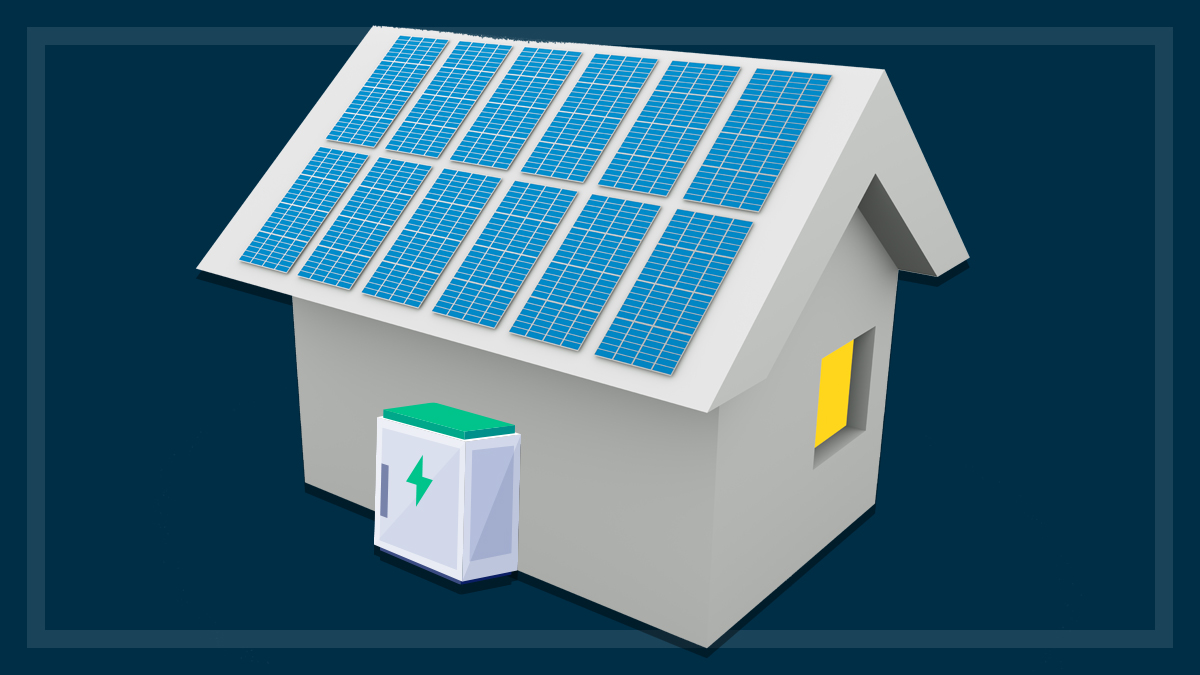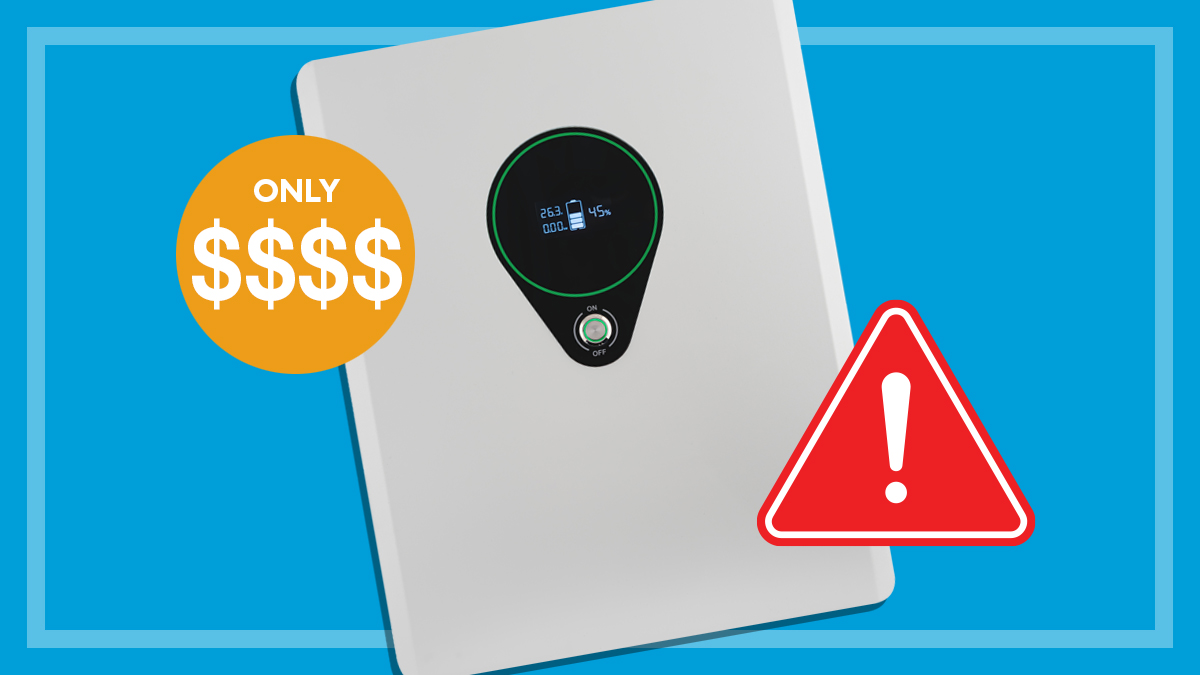Get our independent lab tests, expert reviews and honest advice.
What to know before buying a security camera

It’s not always practical to ask the neighbours to watch the house while you’re on holiday. An alternative can be to install a wireless security camera and use technology and the internet to keep an eye on things yourself.
On this page:
- How do wireless security cameras work?
- How do they connect to a network?
- What to look for in a wireless security camera
- Wire-free or mains powered?
- How much do wireless security cameras cost?
How do wireless security cameras work?
A wireless security camera is like a webcam, except it can sit anywhere in your house and connect to your local wireless network as well as the internet. With this kind of camera, you can keep watch on your house from around the corner or from another country via a computer, smartphone or tablet, helping to give you the peace of mind that comes from knowing your home is under a watchful eye.
A security camera must be set up securely on your network to prevent unauthorised access
Wireless home security cameras can be used for all sorts of reasons, but typical uses can be keeping an eye on children, looking in on a sleeping baby at home, seeing what your pet gets up to while you’re at work or even just checking who’s at the door. They can also send you alerts if they detect motion, such as someone in your home who isn’t supposed to be there.
Of course, any home security camera or other internet-connected device needs to be set up securely to prevent anybody else gaining unauthorised access. You may have heard stories of cameras or other devices being ‘hacked’, though in most cases this is due to not setting up proper security on the camera and network router.
Motion sensing
Wireless security cameras work through your home internet connection, taking still pictures and/or video (usually 30 seconds or less) when they detect movement. They’ll notify you immediately via SMS or email when there’s footage to be viewed. Some of them can even upload pictures and video instantly to the cloud for safekeeping and immediate viewing.
Once largely disregarded because they were too technical for the average user to set up, wireless security cameras have come a long way. Most now come with software that allows you to access photos and videos through your smartphone, as well as a web-connected computer, no matter where you are in the world. Setting them up takes just a few minutes and just about anybody can do it.
How do they connect to a network?
One of the benefits of wireless security cameras is that they’re generally small and unobtrusive. Most connect to your home Wi-Fi network, so you can place them just about anywhere in the home without having ethernet cable running all over the place.
Some even run on batteries to make them totally wireless – you’ll see them marketed as ‘wire-free’ cameras. You can move them from room to room on a whim, or even deploy them outside the house if they’re outdoor-capable models.
Most wireless cameras connect to your home Wi-Fi network, so you can place them just about anywhere in the home
But most wireless units will need access to a power point. It’s generally easier to do this than to have a long run of unsightly blue ethernet cable, unless your home is properly wired for ethernet through skirting boards (relatively few homes are).
If you do have the opportunity to use ethernet cabling, many Wi-Fi cameras have an ethernet port, so you can plug in directly. While Wi-Fi is more convenient, wired ethernet is still faster and generally provides a more stable network connection.
You may want to look for a camera that has power over ethernet (PoE) as a feature, as this will let you power the camera from the same ethernet cable used to carry data, avoiding the need for both ethernet and mains power cables to the camera (though you’ll need a PoE connection box).
What to look for in a wireless security camera
Your camera should come with an ethernet cable (where applicable), power supply, antenna, wall mount (including screws) and set-up instructions. Here are some points to bear in mind when choosing your camera.
Hardware
- Resolution: Is it high-definition? This will affect picture quality and upload speeds.
- Night vision: Does it have an infrared LED for night vision?
- Microphone: Useful in particular when the camera is used as a baby monitor.
- Speaker: So that you can talk through it (again, useful for baby monitor use).
- Movement: Can it pan, tilt and zoom via remote control?
- Storage: Is there built-in storage (memory card slot) for saving recordings locally?
- Power: Does it run on batteries and if so, will it take rechargeable batteries? Does it need to be plugged into mains power and if so, how long is the power cable? Can it use power over ethernet cabling (PoE)?
- Networking: Will it work via ethernet cable or is it restricted to Wi-Fi?
- Mounting: Can it be fixed to a wall or does it just sit on a flat surface?
- Expandability: Can the system be expanded (and to what extent) with additional cameras and sensors for windows, doors and motion detection?
Software
- Monitoring: How do you view the video – via web browser or mobile app?
- Remote control: Does it come with one?
- Motion detection: What capabilities and restrictions are there?
- Alerts: Via email or SMS? For sound as well as movement?
- Image clarity: Daytime and low-light quality.
- Adjustable frame rates: This can be useful for varying the quality and file sizes of recording and streaming.
- Extra service costs: What’s required for using the camera for streaming? Are subscriptions needed for storing and accessing videos remotely?
Image quality
While most consumer-level wireless security cameras are very handy for casual monitoring, if you’re serious about security you’ll want to check out higher quality systems, which are generally wired into your home and need to be installed by a professional.
If you’re using your wireless security camera for even casual home monitoring for security, good image quality is important. If it catches an intruder in the act, you’re going to want to be able to identify them. Unfortunately, there’s no simple way to tell from the box how good the quality will be, but it’s where our wireless security camera reviews can help.
Night vision
Many cameras also offer night vision, which is particularly useful for security monitoring because it can pick up images in very low-light conditions and even in complete darkness, which is often how the house is when you’re not there. However, the quality of images can vary greatly and the distance to the camera is important – the closer the better, generally.
Many infrared night vision cameras don’t capture much detail. They give you a grey-tone image which often shows little or no facial detail, leaving the offender looking like a ghost. Good quality night vision can make the captured images and video actually usable.
Shine a light
The latest trend for outdoor cameras is to have a built-in spotlight or floodlight. This provides a much better night-time picture than infrared night vision and in colour. Having illumination triggered by movement can also act as a visible deterrent to intruders. After all, if you’re up to no good, you won’t want to be hanging around under a spotlight.
Remote access
Having the ability to view your camera’s footage remotely is an important feature, given that you won’t have access to your home computer if you’re away on holiday. Here are remote access features to look for:
- Email and SMS/MMS alerts: Can you set the camera to send email/SMS/MMS alerts when it’s triggered? Can it automatically attach a recorded image to the alert?
- Mobile access: You can’t beat the convenience of being able to look into your home remotely via your smartphone or tablet. Most cameras have software for iOS (iPhones) and/or Android OS, but make sure it’s compatible with your system.
- Web access: Is the wireless security camera video feed accessible online, through a computer that’s not part of your home network?
Where does the footage go?
Some wireless security cameras will store recorded footage on a flash memory card or an external storage drive connected to the camera. Some models offer better security by taking the images offsite immediately, saving them straight to the cloud (internet-based remote storage). Either way, you’ll want to make sure you have a way of keeping any important videos and photos. Here’s what to consider.
- Cloud storage: Some wireless security cameras may provide the cloud storage service for free, but with limited space and for a limited time. Others will provide more, but charge a subscription fee. Alternatively, you may be able to save your files to your own cloud service like Dropbox. Check if the camera software can be configured to connect to a remote storage file server, and whether your particular cloud service will allow it.
- Memory card: Does the device have memory card storage for recordings? This can be handy, as the images will be saved on the card in the camera for easy access, and avoids having to configure and possibly pay for cloud storage. But there’s the risk that the card or camera itself may be stolen.
- PC storage: Can you save and store pictures/video to your computer using the PC program or through the web? This gives you much more storage capacity, but requires that your computer be left turned on. And there’s the danger that the computer itself could be stolen.
- Smartphone/tablet storage: Can you save and store pictures/video to your phone or tablet using the camera’s mobile app? If you can view images and video through your mobile device, can you download them and save them to it?
Other features to look for
- Pan, tilt and zoom: There’s a big advantage in having remote control of the camera to zoom in and make it look around the room with up/down and sideways movement. Models with this ability will generally cost more.
- Motion sensing: You want a camera that can be set to detect motion and automatically take pictures and video and send alerts. Other considerations include whether you can set time slots for motion detection to be active, and if you can adjust the sensitivity.
- Audio link: Some cameras have one- or two-way audio communication via the camera.
- Battery life: As with any portable device, battery life is an important consideration. Battery-powered cameras aren’t designed for all-day, every-day operation. Instead, they only record footage when motion triggers them, or if you do so manually via the app. So it’s important to have a motion sensing schedule and the ability to change the sensitivity of the motion. Cameras without a scheduler should be placed in a low-traffic location where the motion detection won’t constantly be triggered.
Wire-free or mains powered?
Totally wire-free cameras are easy enough to set up and use that just about anybody can do it. They can be quickly redeployed elsewhere in the home on your local network just by picking them up and moving them, and access to viewing is available at the tap of a smartphone app.
However, the trade-off for high mobility is battery life (unless you have a solar charger accessory, available on some models) and video quality, which can be lower to save on battery life.
So, should you go wire-free? You can in many typical households use a wireless network camera that plugs into mains power and not have to worry about replacing or charging batteries. Depending on your home layout, in many cases that could be a better way to go.
For most people, a mains-powered wireless camera will provide the best solution
In cases where you don’t have a nearby power point or don’t want a power cord hanging around or you just want maximum mobility, a wire-free camera offers the most flexibility.
A cellular wire-free model operates over the 3G/4G (phone) network rather than Wi-Fi. This type of camera can even be your go-anywhere watchdog that you can leave in your hotel room to keep an eye on things while you’re travelling. Of course, as with a smartphone, you’ll need a mobile network data SIM card that works in that location.
For most people, however, a mains-powered wireless camera will provide the best solution. They give you the convenience of a wireless camera that you can deploy easily almost anywhere around the home, without having to worry about battery replacement.
Battery life of wire-free cameras
Battery-powered cameras are not designed for active recording continuously as it would very soon wear out the battery, so it’s important to have a motion sensing schedule and the ability to change the sensitivity of the motion. Cameras without a scheduler should be placed in a location where they won’t constantly be triggered.
If the camera picks up too much motion during its scheduled monitoring period, then the batteries will deplete more quickly. If the motion sensor is set to high sensitivity, this will also deplete the battery quicker, as it will detect motion from further away and potentially get triggered a lot more frequently.
The image quality of many cameras is not set to high quality by default. Apart from requiring higher bandwidth to stream footage, high quality images will consume more battery life. Here are some things that can affect battery life:
- A weak or heavily loaded Wi-Fi signal can lead to more consumption while the camera is in standby.
- More power will be consumed at night while the camera is in night mode.
- Sensitivity set too high will lead to more recordings, which will deplete the battery more quickly.
Recycling camera batteries
If you use cameras that require batteries, these batteries will eventually fail and should be recycled, not disposed of in the rubbish.
Check with your local council about battery recycling in your area. Recycling Near You and the Australian Battery Recycling Initiative (ABRI) also list locations that will safely recover and recycle your batteries.
Wired-in solution
There are, of course, many fully wired-in security cameras available that need to be installed by an electrician in a fixed point. These offer a more permanent security monitoring solution, but should be installed by a professional.
How much do wireless security cameras cost?
Wireless security cameras range in price from around $30 for a cheap single camera to more than $1000 for a high-quality unit or multi-camera kit, and will usually include features like remote control, night vision, Wi-Fi, megapixel rating and lens quality. Our test results show that you don’t have to spend top dollar to get a quality security camera, but models under $100 generally won’t deliver the best performance.






